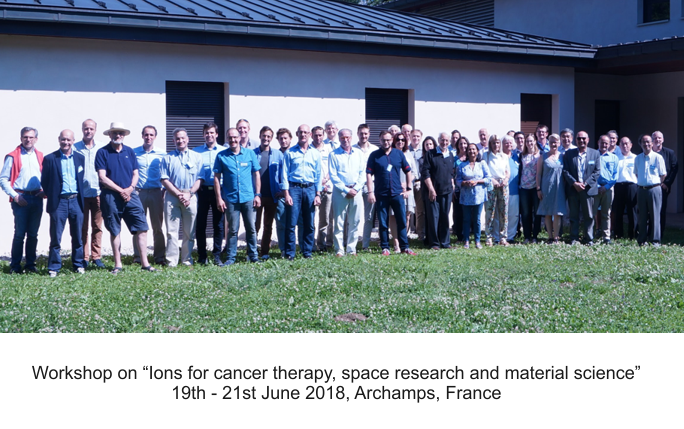Medical Experts discuss future R&D directions

A workshop on “Ions for cancer therapy, space research and material science” took place from 19th - 21st June 2018 in Archamps, France, in the vicinity of Geneva. The event was hosted by the European Scientific Institute (ESI) and organised within the framework of ARIES and ENLIGHT. It highlighted the increasingly important interface between fundamental physics research and medical applications.
Over recent decades many important developments have been built on either basic physics principles or the tools developed to conduct physics research. Notable examples are diagnostic and therapeutic techniques such as particle therapy or innovations in space and material sciences. CERN and GSI, two laboratories that pioneered ion beam based cancer therapy since the early '90s, co-organised this workshop which attracted more than 60 experts from all over the world. On the first day, reports from leading clinical facilities such as OMA partners CNAO and Medaustron in Italy, as well as the Heidelberg Ion Therapy center HIT in Heidelberg, Germany were given. This formed an excellent basis for discussion of specific technical and technological challenges, such as efficient ion sources, different technology choices for linear and circular accelerators, as well as challenges related to beam delivery systems. Two sessions then focused on the particular R&D challenges related to synchrotrons and gantry design with discussions continuing until 19:00 on the second day. OMA Steering Committee member Dr Christian Graeff, who was also member of the Programme Committee, gave a talk on "Helium as a range probe".
The final day of the workshop focused on future directions in ion therapy, as well as accelerator development. OMA Coordinator Professor Carsten Welsch talked about "European medical accelerator networks and design perpectives" where he emphasized the role OMA can play.
The event provided an ideal opportunity to exchange ideas, share current experiences and explore future possibilities for the design of a next generation medical research and therapy facility with ions in Europe. All presentations are now available via the workshop homepage.